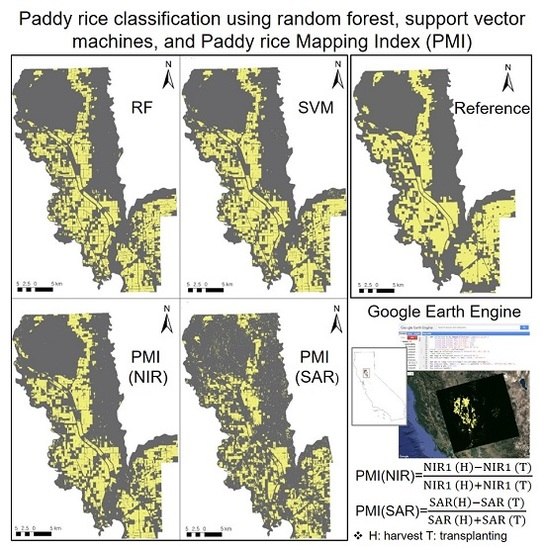Classification and Mapping of Paddy Rice by Combining Landsat and SAR Time Series Data
Abstract
Share and Cite
Park, S.; Im, J.; Park, S.; Yoo, C.; Han, H.; Rhee, J. Classification and Mapping of Paddy Rice by Combining Landsat and SAR Time Series Data. Remote Sens. 2018, 10, 447. https://doi.org/10.3390/rs10030447
Park S, Im J, Park S, Yoo C, Han H, Rhee J. Classification and Mapping of Paddy Rice by Combining Landsat and SAR Time Series Data. Remote Sensing. 2018; 10(3):447. https://doi.org/10.3390/rs10030447
Chicago/Turabian StylePark, Seonyoung, Jungho Im, Seohui Park, Cheolhee Yoo, Hyangsun Han, and Jinyoung Rhee. 2018. "Classification and Mapping of Paddy Rice by Combining Landsat and SAR Time Series Data" Remote Sensing 10, no. 3: 447. https://doi.org/10.3390/rs10030447
APA StylePark, S., Im, J., Park, S., Yoo, C., Han, H., & Rhee, J. (2018). Classification and Mapping of Paddy Rice by Combining Landsat and SAR Time Series Data. Remote Sensing, 10(3), 447. https://doi.org/10.3390/rs10030447






